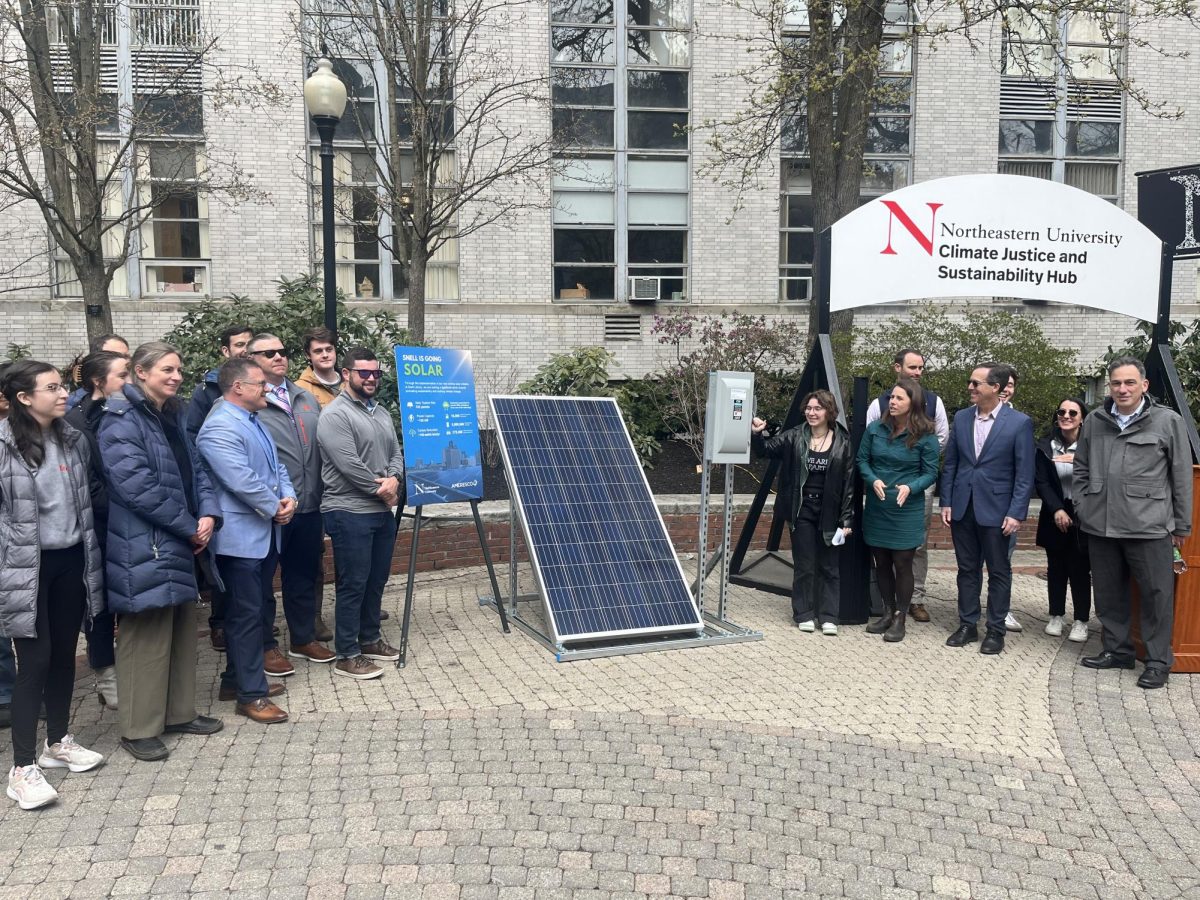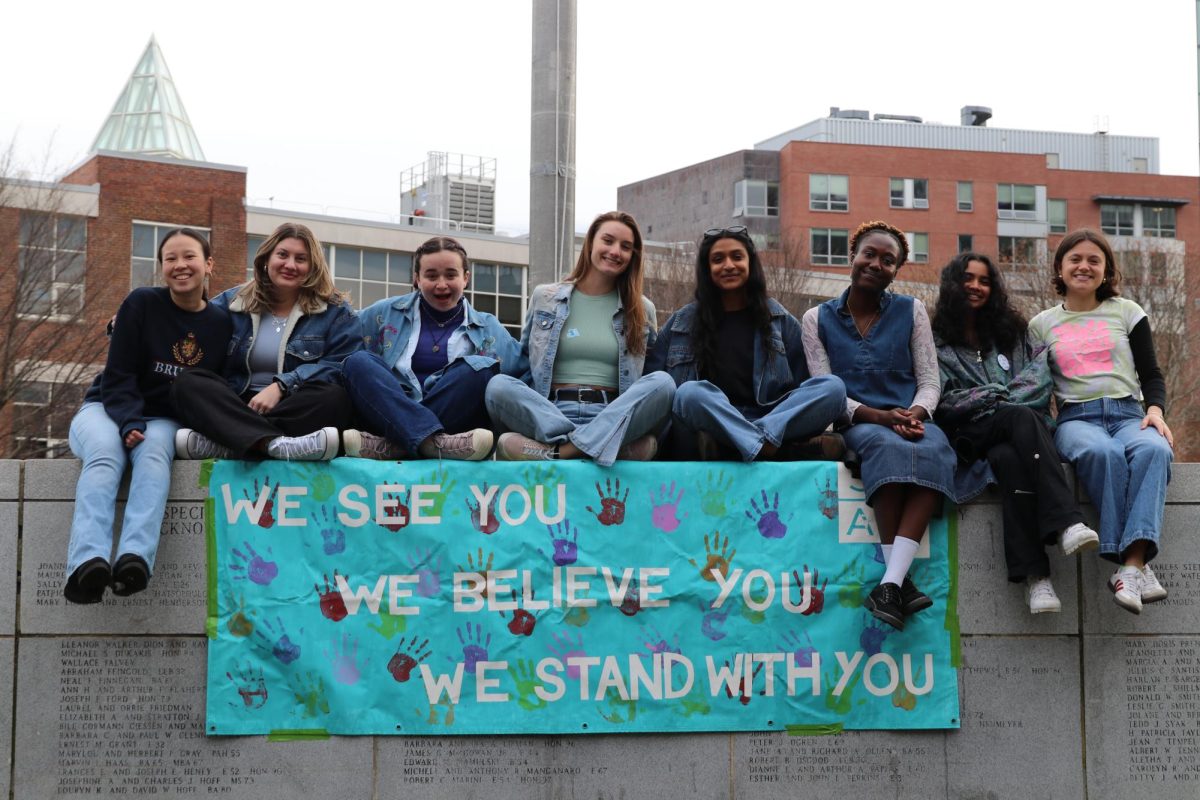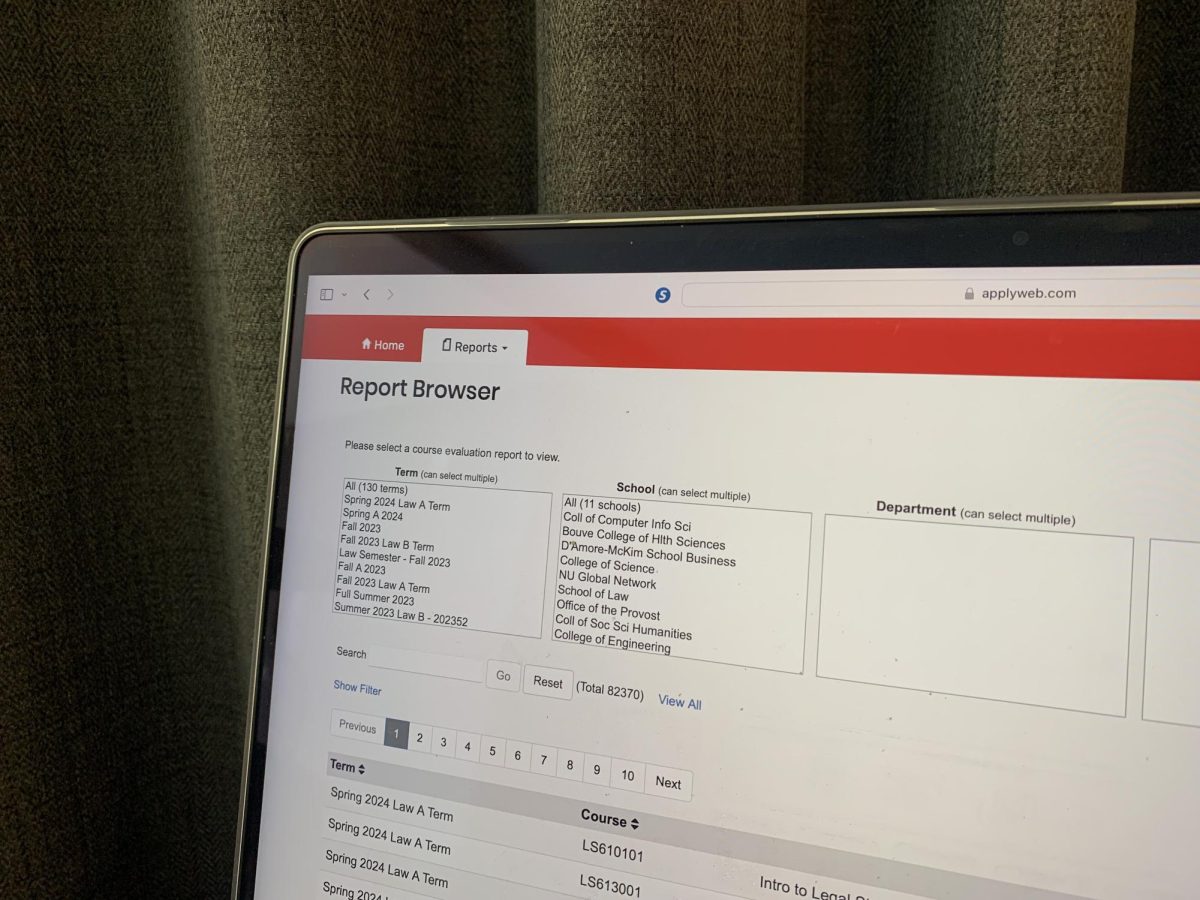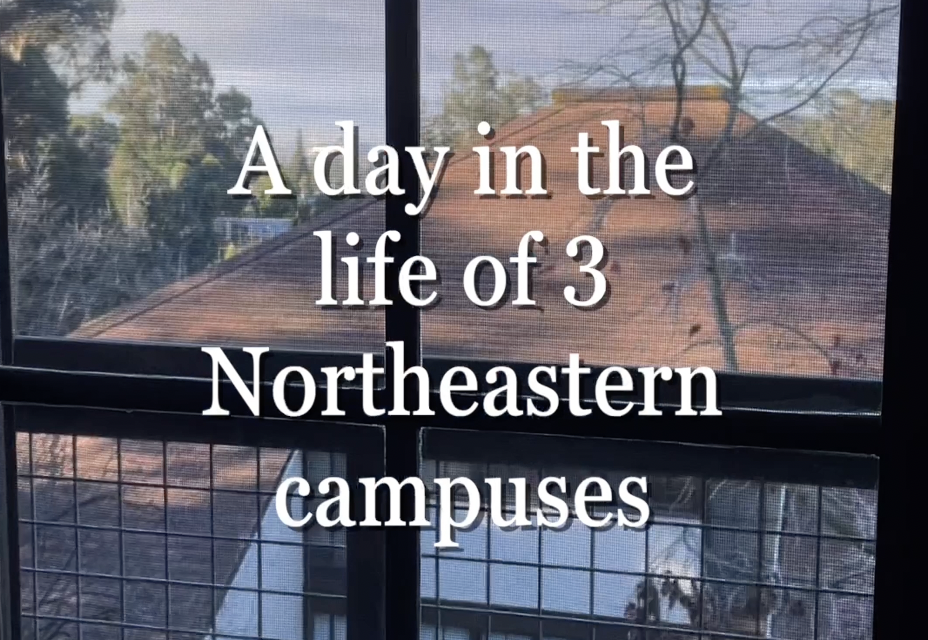By Rowan Walrath, opinions editor
TRIGGER WARNING: This story contains material which may be upsetting or harmful to survivors of sexual violence.
Ten months after the analysis was originally conducted, Northeastern University’s second annual campus climate survey results were released to the student body. Intended to provide a holistic view of sexual assault at Northeastern, a summary of and link to the report were sent in an email from Vice President of Student Affairs Madeleine Estabrook on Friday, Oct. 14 at 3:40 p.m.
Around 21 percent of undergraduate and graduate students, selected by random sampling, responded to Northeastern’s survey voluntarily and confidentially during December 2015. The university’s total enrollment is 19,940 students, according to U.S. News and World Report, putting the estimated number of respondents at 4,187. According to Estabrook’s email, the results are strongly representative of the student body as a whole.
Beginning in January 2014, the White House Task Force to Protect Students from Sexual Assault urged, but did not require, universities to conduct campus climate surveys. The first Northeastern campus climate survey was conducted later that year, and the results were released Sept. 30, 2015.
The 2015-16 survey included questions about respondents’ own experiences with sexual assault, what they would do when faced with potentially dangerous situations and whether they were aware of certain on-campus resources.
While the university-wide email touted Northeastern as “a recognized leader in working to foster a safe and supportive campus community” based on the survey, students had less positive reactions. Roxanne Anderson, a senior human services major and president of the Sexual Assault Response Coalition (SARC) at Northeastern, said she found the report disheartening.
“[The results are] very basic and honestly something that Northeastern would expect our students to release in a week for an assignment,” Anderson said. “It’s ridiculous that it took this long. [With] the first climate survey, […] it was student activism and student voices that got the university to release the results.”
Members of SARC have played an active role in spurring the report’s release to the Northeastern community, although they are not directly involved in the production or conduction of the survey. According to News archives, SARC was responsible for pushing the university to release the 2014-15 report and then discussing the results with administrators.
“Essentially, when we had met with them last winter to discuss the results they released, they said they wanted our input, and we wanted to give it,” Anderson said. “We literally rewrote the wording of questions and presented it to them in a comprehensive document. Some of them were added, like the question about the prevalence of sexual assault on campus. Some of the other questions […] were unnecessary and leading in the way they were worded.”
Alexandra Cestone, a junior political science and business combined major and vice president of SARC, criticized many of the yes-or-no questions presented in the survey, advocating instead for opportunities to submit open-ended responses.
“We felt that [for] a lot of the questions, the wording was ‘do you know’ and then them listing some sort of resource on campus that exists,” Cestone said. “When you take an exam, the professor does not word the question that way, because that would be too easy. […] These questions don’t actually prove that the students know these things. Anyone could just look at it and be like, ‘Oh yeah, I totally know that,’ but that doesn’t mean that you actually do. We would rather see them say maybe, for example, ‘What departments on campus would you go to after an instance of sexual violence or sexual assault?’”
In her email, Estabrook highlighted steps the university had taken within the past year to increase on-campus resources, including the establishment of the Office for Gender Equity and Compliance and the Violence Support, Intervention and Outreach Network (ViSION) Resource Center, the appointment of Title IX Coordinator Mark Jannoni and a new violence intervention program for incoming students. She also mentioned the Northeastern University Police Department and WeCare. Estabrook did not return calls from The News to comment directly for this article.
However, Anderson questioned the efficacy of the new programs.
“If we’re going off of misinformation and statistics that just boost up the credibility of the university, we’re not actually doing anything,” Anderson said. “We’re just patting ourselves on the back and creating these fluffy programs that don’t actually help students.”
Cestone pointed out that several questions in the survey seemed to depict situations of potential sexual assault as black and white, when in reality, many such instances are shrouded in vagueness. According to Cestone, this false simplification may have contributed to how respondents answered.
“I was frustrated with the wording of, well, pretty much all the questions, but earlier ones were like, ‘If a friend of yours was a victim of sexual violence, would you help them?’” Cestone said. “You’re basically asking someone, […] ‘Would you do the right thing, on a basic level be a good person?’ Of course you’re going to say, ‘Yeah, I would help.’”
Estabrook noted in her email that the prevalence of sexual violence at Northeastern is low in comparison to other universities, but work is yet to be done.
“While these incidence rates are lower than reported national averages from other (or different) campus climate surveys, they are nevertheless deeply concerning,” Estabrook wrote. “When it comes to unwanted sexual contact, we must have a policy of zero tolerance. These responses serve as a call to all members of our community to redouble our efforts to prevent sexual violence at every turn.”
Anderson acknowledged that Northeastern administrators, Estabrook included, have generally good intentions. However, she took issue with the wording of Estabrook’s email in regard to the number of reported incidents at Northeastern as opposed to other campuses.
“I believe one of the questions in the survey was, ‘Have you been sexually touched without your consent?’ and I believe 14 percent said, ‘Yes,’ and Northeastern took that percentage and made it into a positive for the school and said they were better than the national average,” Anderson said. “It’s disappointing to think that Northeastern decided to take that and turn it into a bragging point instead of sympathizing with the individuals that are actually affected.”
According to the survey results, 14.22 percent of students have been sexually touched without consent in their time at Northeastern. That equates to about 2,836 students, according to News analysis using the U.S. News and World Report enrollment statistics.
Slightly more than six percent of students said that sexual penetration had been attempted without consent — around 1,214 students — and 3.62 percent said they were sexually penetrated without consent, around 722 students.
In the 2014-15 campus climate survey, respondents were not asked if they had been directly affected by sexual assault. Elliot Horen, junior information science and business administration major and president of the Student Government Association (SGA), said he was glad for this year’s change but enraged when he read the report itself.
“I was, in turns, extremely saddened and then furious,” Horen said. “Six percent [of students having experienced attempted sexual penetration without consent] is obviously unacceptable — we’re talking about more than 1,000 students here who have experienced rape. I think that needs to be clear. It’s easy to get lost in the verbiage. […] There needs to be a focus in student government and at the administrative level.”
Horen was troubled by the sheer number of students who have experienced sexual assault or attempts at sexual assault.
“It’s unacceptable, wrong and so out of line with the official crime statistics,” Horen said.
According to Northeastern’s annual crime and fire safety report, released on Friday, Sept. 30, 13 sexual assaults were reported on campus in 2015, consistent with previous years’ totals of 14 in 2014 and 11 in 2013. By contrast, a representative 2,836 students have been sexually touched without their consent.
Analysis conducted by the Department of Justice reveals that 20 percent of all completed and attempted rapes and sexual assaults, as well as threatened rapes and sexual assaults, are reported to authorities.
The campus climate survey results suggested that while most students agree or strongly agree that the university would effectively address sexual violence reports, a significant portion do not.
However, students appear to have confidence in their peers in the event of sexual violence, according to the report.
Still, many indicated that there was a substantial, though not overwhelming, culture of inappropriate references to sexual assault.
Overall, most students feel safe and supported on campus and believe they play a role in creating that environment.
Suchira Sharma, third-year international business major and vice president of SGA, expressed discomfort at the fact that Friday’s email came from the Office of the Vice President for Student Affairs and no other sources.
“I want to see more from all departments at the university united behind this issue and not just one,” Sharma said.
This Friday, SGA representatives will be meeting with Jannoni in the Office for Gender Equity and Compliance, according to Horen. SGA, working with SARC, intends to remove student conduct boards from sexual assault hearings on campus, putting such decisions instead in the hands of people who receive comprehensive training and are not exclusively undergraduate students.
“I want this to be treated as a campus emergency,” Horen said. “It’s too easy to let this kind of violence happen in the background, but what’s going on here is an ongoing systemic problem, an ongoing systemic violence problem. That is happening at Northeastern University.”
Confidential resources* for survivors of sexual assault, courtesy of SARC:
On campus:
University Health and Counseling Services: 617-373-2772
Center for Spirituality, Dialogue and Service: 617-373-2728
Off campus:
Boston Area Rape Crisis Center Hotline: 1-800-841-8371
The Network/La Red Hotline: 617-742-4911
Violence Recovery Program at Fenway Health: 617-927-6250
Victim Rights Law Center: 617-399-6720
Other (non-confidential) resources for survivors of sexual assault:
ViSION Resource Center: 106 St. Stephen St.; Hours: 9 a.m. – 5 p.m., Monday – Friday
Mark Jannoni, Assistant Vice President for Title IX Initiatives and Title IX Coordinator: 617-373-3543
Your Resident Assistant or Residence Director
*Confidential resources are individuals or groups that are not considered mandated reporters. Mandated reporters, or non-confidential resources, must report all incidents of sexual crimes to NUPD as soon as they are made aware of them.
News graphics by Rowan Walrath.
Campus-Climate-Survey-2015-2016




























